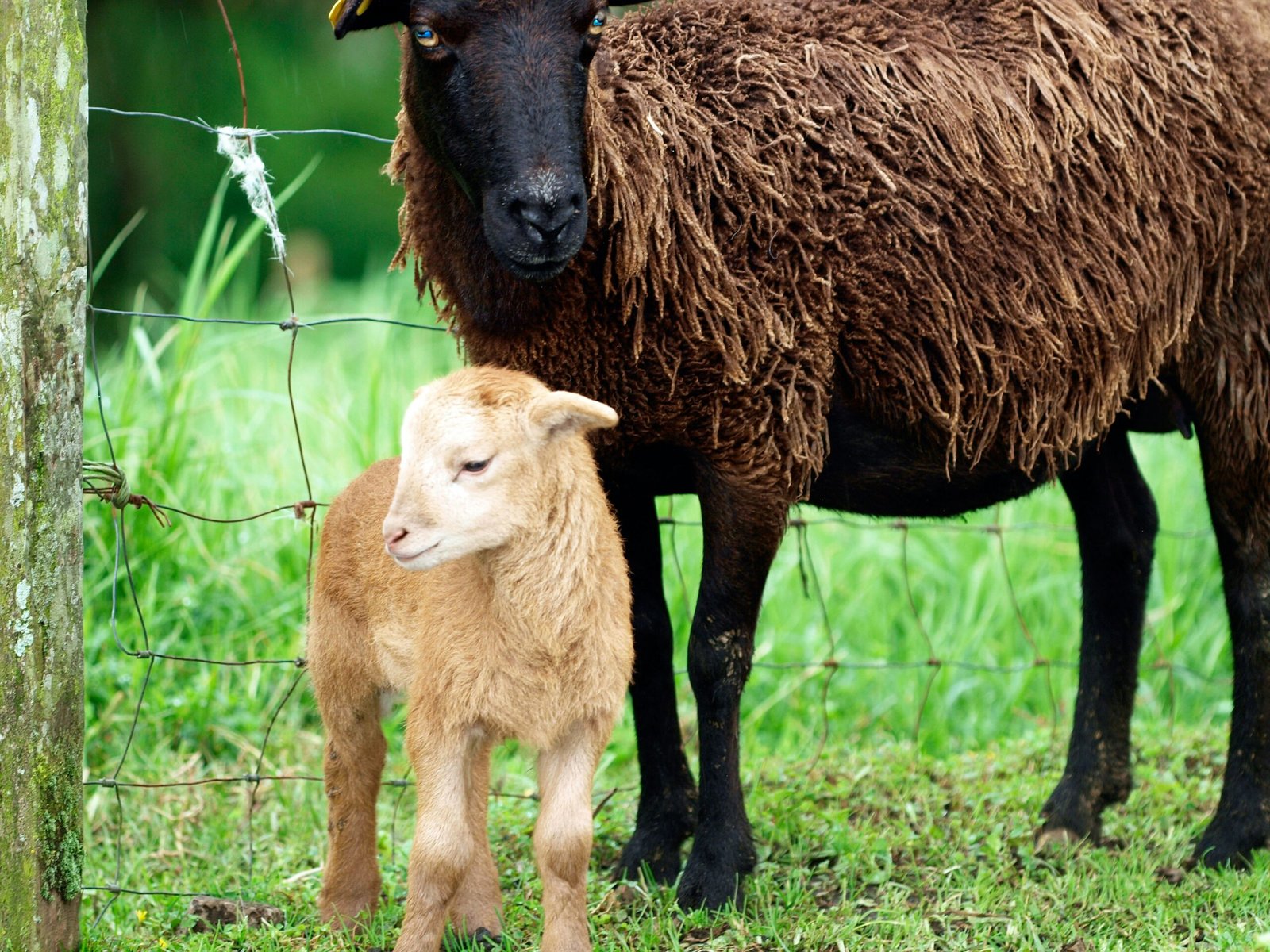Blog
Understanding the Border Leicester Sheep: A Comprehensive Guide

Historical Background and Origin
The Border Leicester sheep breed traces its roots back to the 18th century in Northumberland, England. This breed emerged through the pioneering work of the Culley brothers, George and Matthew, who were prominent agriculturalists of their time. Their primary goal was to develop a sheep breed that exhibited both hardiness and efficient wool production, attributes that were highly valued in the agricultural landscape of the period.
The Culley brothers utilized Dishley Leicester rams, a breed established by the renowned livestock breeder Robert Bakewell, as the foundation stock for their breeding program. Dishley Leicesters were known for their superior wool quality and robust body conformation. By selectively breeding these rams with local ewes, the Culleys were able to create a new breed that combined the desirable traits of both parent lines. This meticulous selection process focused on producing sheep with a strong constitution, good mothering abilities, and high-quality fleece.
Several geographical and economic factors played a significant role in the development and proliferation of the Border Leicester sheep. Northumberland’s harsh climate demanded livestock that could withstand severe weather conditions, making hardiness a critical trait. Additionally, the agricultural economy of the time was heavily reliant on wool production, and an efficient wool-producing breed was economically advantageous. The strategic location of Northumberland, near the border between England and Scotland, provided an ideal environment for the breed’s development, as it facilitated trade and the exchange of breeding stock between regions.
By the early 19th century, the Border Leicester had established a reputation for its adaptability and productivity, leading to its widespread adoption across the British Isles and beyond. The breed’s success can be attributed to the Culley brothers’ innovative breeding techniques and their understanding of the economic and environmental needs of their time. This historical context underscores the significance of the Border Leicester sheep in agricultural history and its enduring legacy in modern sheep farming.
Distinctive Characteristics and Physical Traits
Border Leicester sheep are among the most easily recognizable breeds due to their unique and striking physical characteristics. One of the most notable features is their distinctive Roman nose and long, upright ears that give them a pronounced and noble profile. These sheep are medium to large in size, with mature ewes typically weighing between 150 to 200 pounds and rams reaching up to 275 pounds. Their robust frame is supported by strong legs, making them well-suited for both meat and wool production.
The fleece of the Border Leicester is another significant trait that sets them apart. Their wool is long-stapled, lustrous, and dense, making it highly sought after in the textile industry. The fleece can weigh between 8 to 12 pounds per shearing and has a staple length of 6 to 10 inches. This quality wool is ideal for spinning and produces yarn that is both durable and soft, making it perfect for a variety of woolen goods.
In addition to their physical attributes, Border Leicester sheep are known for their favorable temperament. They are generally docile and easy to handle, which is beneficial for shepherds and farmers. Their calm nature makes them suitable for various farming practices, whether in large-scale operations or smaller, hobby farms.
Adaptability is another key characteristic of the Border Leicester. These sheep are highly resilient and can thrive in a wide range of environmental conditions. Their hardiness allows them to manage well in both cold and warm climates, making them a versatile choice for farmers across different regions. This adaptability, combined with their strong immune systems, contributes to their overall health and longevity.
Overall, the distinctive physical traits and characteristics of the Border Leicester sheep make them an exceptional breed for both meat and wool production. Their unique appearance, high-quality fleece, and adaptable nature ensure that they continue to be a valuable asset in the agricultural industry.
Versatile Use in Meat and Wool Production
The Border Leicester sheep breed is renowned for its dual-purpose utility, excelling in both meat and wool production. This versatility contributes significantly to its popularity among farmers and livestock enthusiasts. When it comes to meat, Border Leicester sheep offer a quality that is highly prized in the market. Their meat is appreciated for its tenderness, rich flavor, and fine texture, making it a favorite among consumers and culinary professionals alike. The high market demand for Border Leicester lamb and mutton ensures that farmers can achieve profitable returns on their investments.
In addition to their superior meat, Border Leicester sheep are also celebrated for their exceptional wool. The wool of Border Leicester sheep is characterized by its long, lustrous fibers which are both durable and soft. This unique combination makes it highly sought after in the textile industry for a variety of applications. From high-quality garments to durable upholstery, the wool’s versatility allows it to be used in numerous products. Its natural luster and durability make it ideal for spinning, knitting, and weaving, ensuring that the final fabric is both attractive and long-lasting.
Economically, raising Border Leicester sheep for both meat and wool provides a dual revenue stream, enhancing the financial stability of farming operations. This dual-purpose capability reduces the risk associated with reliance on a single product, as farmers can capitalize on both markets. The breed’s adaptability to different farming environments further adds to its appeal, allowing for efficient integration into various agricultural systems.
In essence, the Border Leicester’s ability to yield high-quality meat and superior wool makes it an invaluable asset for farmers. The economic benefits derived from this breed’s versatile production capabilities underscore its status as a preferred choice in the agricultural community, ensuring its continued prominence in the industry.
Modern-Day Significance and Breeding Practices
The Border Leicester sheep, despite its origins dating back to the 18th century, remains a pivotal breed in modern livestock farming. Its unique combination of desirable traits, such as robust wool quality and high fertility rates, continues to make it an essential breed in the agricultural landscape. Contemporary breeding practices have evolved significantly, leveraging advancements in genetic selection to enhance these inherent qualities. Breeders today utilize sophisticated techniques like genomic selection and artificial insemination to ensure the propagation of superior genetic lines, aiming to boost productivity and maintain the breed’s hallmark characteristics.
Globally, Border Leicester sheep have made a notable impact, with strong presences in countries such as the United Kingdom, Australia, New Zealand, and the United States. Each region has adapted its breeding practices to local conditions, ensuring the breed thrives in diverse environments. For instance, in Australia and New Zealand, where sheep farming is a major industry, the Border Leicester is often crossbred with other breeds to improve meat and wool yields, showcasing its adaptability and versatility.
Current trends in breed improvement focus on enhancing traits like meat quality, disease resistance, and overall hardiness. Efforts are also being directed towards integrating sustainable farming practices, reducing the environmental footprint of sheep farming. This includes selective breeding for traits that allow for lower input requirements, such as improved feed efficiency and resilience to climatic changes. Furthermore, the growing interest in organic and ethically raised livestock has propelled breeders to adopt more natural and humane breeding methods.
However, modern Border Leicester breeders face various challenges, including the need to balance tradition with innovation. Maintaining genetic diversity while striving for specific traits can be complex, requiring meticulous planning and extensive knowledge. Additionally, market demands and economic pressures necessitate continuous adaptation and improvement. Despite these challenges, the opportunities for enhancing the Border Leicester breed are vast, driven by ongoing research and a dedicated community of breeders committed to preserving and advancing this valuable breed.
